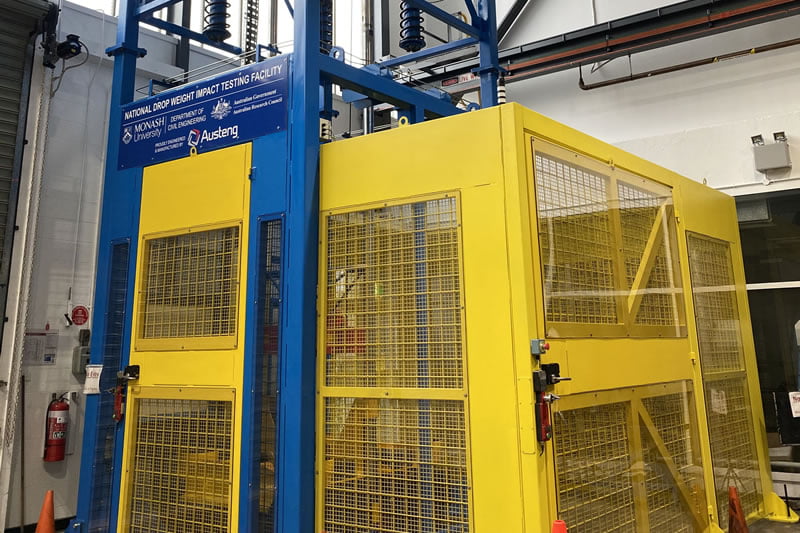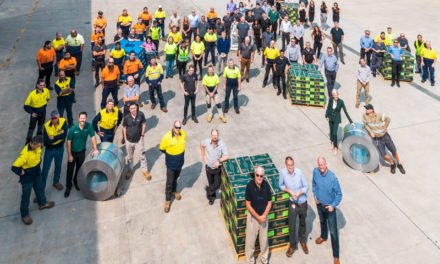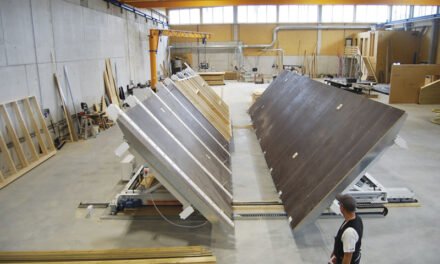A new state-of-the-art facility will test safety and save lives.
A state-of-the-art impact testing facility was launched at Monash University in December last year. The National Drop Weight Impact Testing Facility (NDWITF) uses world-leading technology that can observe the behaviour of elements and sub-assemblies under severe impact loading of up to two tonnes.
The facility will assess the structural safety of building and construction materials used in both new and existing structures, railway networks, tunnels and bridges, as well as road safety barriers and protective equipment. The NDWITF will also support research in the broader research community on construction, mining, geo-mechanics, energy and the environment. Fields of application and interest include construction materials under high strain loading, structural dynamics and engineering, mining excavation and rock fragmentation.
Enabled by an Australian Research Council (ARC) LIEF grant, the NDWITF is a Monash University-led collaboration involving six other universities, including the University of New South Wales, Swinburne University of Technology, University of Wollongong, Queensland University of Technology, University of Technology, Sydney and the University of Melbourne. The facility is located at Monash University’s Department of Civil Engineering and accessible to all researchers, students and industry.
Associate Professor Amin Heidarpour, Head of Structural Engineering at Monash University, has led this project. He was supported by some of Australia’s esteemed experts in this space, including Prof Xiao-Ling Zhao and Prof Mark Bradford (UNSW), Prof Guoxing Lu (Swinburne), Prof David Thambiratnam and Dr Sabrina Fawzia (QUT), Prof Alex Remennikov (Wollongong), Prof Brian Uy (Sydney), Prof Chengqing Wu (UTS), Prof Tuan Ngo (Melbourne) and Prof Pathegama Ranjith Gamage (Monash).
“A state-of-the-art impact engineering facility provides a national research focus on behaviour of construction materials and systems under impact loading with unique observation techniques,” Assoc Prof Heidarpour says. “The facility will advance understanding of the fundamental behaviour of critical infrastructure exposed to impact loading and will foster innovations in design and construction.
“The size of the surface of the specimen could be up to 1m wide by 2m long, with no limitation on the height, making it suitable to test long-span CLT panels and glulam beams. If the size of the specimen is out of this range, a re-scaling technique will be used. This is the largest drop weight impact testing facility in Australia and the state-of-the-art measurement instruments, such as a non-contact photogrammetry system, associated with it make the facility unique in the world.”
The impact weight of NDWITF can be up to 2000kg, creating an impact energy of up to 200,000 J and impact velocity of up to 18m/s.
A key partner in this project is Austeng, a Geelong-based engineering company who engineered, manufactured, and installed the facility in line with the University’s requirements. “Austeng was proud to be part of this important project and collaborate with Monash University and I am delighted our team was able to deliver a practical and workable solution given the stringent performance parameters set by Monash and the significant engineering challenges involved,” says Ross George, Austeng managing director.











